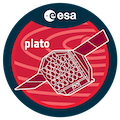Speaker
Description
New-generation of high contrast instruments (SPHERE/VLT, GPI/Gemini, SCExAO/Subaru) can be used to unveil features, in the form of giant moons or disks, within the Hill radius of directly imaged substellar objects.
Following a dedicated study on SPHERE observations, we detected a candidate satellite companion of 1 MJup on a 10 au orbit around the low-mass brown dwarf DH Tau B (10 MJup).
More suitable assumptions are needed to model the formation of such giant satellites/planetary pairs, such as gravitational capture.
In this scenario, the two planets, which we assume are formed independently in the circumstellar disk via gravitational instability, become a bound pair due to close encounters during which energy is dissipated through tidal interactions.
Results show that the formation rate for planet-planet pairs can reach a 14% in the gravitational instability scenario, similar to what was presented by previous works such as in Ochiai+2014 for the core accretion models.

